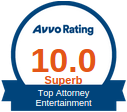By: Jeremy M. Evans, @JeremyMEvansESQ
Managing Attorney at California Sports Lawyer
The journey of Major League Baseball (“the owners” or “MLB”) and the Major League Baseball Players Association (“MLBPA” or “Players Association”) has enjoyed labor peace since the last strike in 1994-1995. However, labor peace has not always been the case. There have been several work stoppages along the way.
We now embark upon the end of the current Major League Agreement[1] (“Agreement” or “CBA”) at the conclusion of the 2016 season. The 2017 season will begin either in labor peace or in dispute. This article will discuss the Top Ten Issues and Predictions for the 2017 Major League Baseball Labor Negotiations.
1. Shortening the Season to 154 Games from 162 Games[2]
It has been argued that players need more rest between games (and possibly fewer injuries) and that the season drags on too long. Weather has also become an issue as most baseball games are played outside, as playing games in November during the playoffs is not ideal. Legitimate issues, but they do not tell the entire story.
First, shortening the season to 154 games would return America’s pastime to pre-1961 statistical collection (Major League Baseball changed to a 162 game schedule for the 1961 season). Meaning, and for example, a pre-1961 player would have had to attack Babe Ruth’s homerun record of 60 homeruns during a 154 game season. Since 1961, players have had an extra eight games to accomplish the same. It is a purist argument, but note that no player in the history of the game has beaten Ruth’s record of 60 or more homeruns in 154 games or fewer. This statistic includes those players who have admitted to or have been alleged to have used performance-enhancing drugs.[3]
Second, the key issue to be discussed is money. Fewer games on television means less money.[4] However, Major League Baseball can combat less television revenue through increased viewership and a larger fan base. There is an argument to be made that a shortened season would attract new fans since that is what many fans and non-fans are have requested. Fewer games also means less chance of injury where fans get to see their favorite players play more. Lastly, fewer games also means tighter playoff pushes as teams have less time to make the cut.
Prediction: Major League Baseball and the Players Association will agree upon a shortened 154 game season.
2. Further Developed Domestic Violence[5], Drug[6], and Tobacco[7] Usage Policies
In 2015, when the national news was focused on former Baltimore Ravens running back Ray Rice and current Minnesota Vikings running back Adrian Peterson and their domestic violence disputes being handled by the National Football League Commissioner Roger Goodell, Major League Baseball and the Players Association quickly approved a new domestic violence policy that gives the MLB Commissioner sole authority to discipline players.[8] Sound familiar and like a recipe for future problems? It should.
Policies need to be implemented and decided upon fairly through a neutral and uninterested party or group to be effective and meaningful. Under the current policy, it will be very telling to discover what happens when a bad decision, controversial ban, or disciplinary action is handed down on a popular player where the Commissioner has full authority. The Player’s Association would be wise to negotiate joint decision-making and/or having neutral arbitrators making all disciplinary decisions from the outset.
Furthermore, after time allows issues to come to the forefront, deals negotiated during labor peace and those that occur after a CBA has ended are quite different from and often more complex than those created when the parties have had time think and reflect. If you doubt the Players Association resolve, we only need to look at the Players Association’s Executive Director Tony Clark’s[9] comments about the upcoming negotiations. He said "Labor peace is not the goal. A fair and equitable deal is the goal.”[10]
Moreover, although the drug policy has worked very well by most accounts, you can bet that the player’s rights as it relates to the drug policy and tobacco use will be discussed and clarified in any new deal. The MLB/MLBPA Joint Drug Prevention and Treatment Program, like the Domestic Violence Policy, were agreed to during labor peace, not after the end of a CBA. More time and no current deal likely mean more to negotiate.
Prediction: Even though the treatment panels included in the Domestic Violence Policy are progressive and needed, Major League Baseball and the Players Association will agree upon less Commissioner control over disciplinary actions and there will be clarifications and possible changes to the Joint Drug Program and tobacco use as cities are passing tobacco ban laws.
3. Prevent Tanking by Teams with a Lottery for the First Round of Draft Picks
The first issue here is whether teams are purposefully losing games to secure the number one pick. To do so, the number one pick would have to consistently be a quality investment. That is not always the case. There have been numerous number one picks that have not performed.
However, a lottery system, like what the National Basketball Association uses, might keep teams honest and diligent about continuously building winning teams. On the other hand, Competitive Balance picks[11] already give teams’ added picks when they lose a player to free agency. Parity has been terrific during the last twenty years of labor peace, so it might not be wise to add the lottery wrinkle.
Prediction: Major League Baseball and the Players Association will agree upon a first round only lottery, but it may be dependent on what happens with the Luxury Tax cap, international talent acquisition rules, and the Qualifying Offer, which will be discussed in further detail below.
4. International Draft with Simplified and Consistent Rules in Signing International Talent
For one, having streamlined rules will end the black market for acquiring talent as teams would be forced to draft or sign talent through a dedicated and fair system adding further parity to the league. It would get rid of buscones[12] and their use of muscle, money, and threats in getting players smuggled into Mexico or another country to eventually land in the United States on a visa where they can sign and play for a Major League team. Lastly, it would be the next logical step in the graduation of the game in the international market.
Imagine drafting Japanese, Korean, Venezuelan, Cuban, Mexican, and Dominican amateurs in the same round, at the same time, and subject to the same rules. Imagine drafting international free agents in one simplified posting system. Brilliant, safe, exciting, and a fair playing field. Baseball will finally be able to highlight the international game that it is. Couple this with the World Baseball Classic and it is further highlight of the beautiful game of baseball.
Prediction: With the ease of relations between the United States and Cuba, we are already seeing a move towards simplified and consistent rules to acquiring international talent. A lack of time may prevent Major League Baseball and the Players Association from implementing a complete overhaul, but it is ripe for the pickoff (pun intended).
5. Luxury Tax and Equal Share of League Revenues between the Owners and the Players
Major League Baseball does not have a salary cap. However, the luxury tax sets an amount for team spending and taxes teams who go over the dollar amount (currently $189 million United States Dollars, "USD"), while distributing the taxes collected to the other teams in the League. The international free agent pool works in the same manner. The tax does not prevent teams from going over, but it does challenge teams to keep below the amount to avoid the tax (e.g., giving free money to their competitors).
On a different note, Major League Baseball and the Players Association have done an equitable job on nearly dividing league revenues at 50/50. Owners still own a 50+-percentage advantage, but there is sure to be some discussion on moving the seesaw in the players favor. This is especially true where Forbes just ranked the value of MLB franchises. The Yankees, for example, top the list, and are worth $3.4 billion USD.[13]
Prediction: The luxury tax limit will be increased to somewhere between $200-210 million USD to accommodate the rising cost of talent and inflation, while revenues will move towards a 50/50 split between the players and owners. This is especially true in light of the massive television deals that have been signed to date and that may be signed in the future.
6. The Use of the Qualifying Offer Tied to Free Agents[14]
The problem has become that there are free agents who have taken too long to sign and others who have not yet signed. Why? It is because once the team that had the free agent extends a qualifying offer to a soon-to-be free agent and the player turns down that offer, any new team that signs the free agent has to give up a draft pick to the team who lost the free agent player. This creates a situation where teams wanting to sign such free agents must pay the salary demands and give up a draft pick.
The qualifying offer feels too much like the institutional control that the National Football League has over its teams through franchise tags. Major League Baseball has what many consider to be the strongest union in the world in the Players Association and it is likely there will be pushing to get rid of the qualifying offer because of the control teams have over free-agents. Free agents should be able to hit the market unhindered. If a free agent is not free, what is he?
Prediction: Major League Baseball and the Players Association will eliminate the Qualifying Offer for the 2017- Agreement.
7. The World Baseball Classic[15] and Games Played Overseas
Major League Baseball realizes that it must change to keep up with other major sports by growing itself into an international brand. Baseball has done this by playing exhibition, World Baseball Classic, and regular reason games in China, Cuba, Australia, and Japan, among other locations, and then offering television licensing in those areas to broadcast games.[16] However, many of the best American players have not bought into the program by refusing to play because of injury or circumstance. This will take some time for American ballplayers to buy into as basketball has had a head start and soccer/fútbol is the international game, while American football is making its inroads abroad as well.
For the game of baseball to grow internationally, the following must occur. First, World Baseball Classic games and games played abroad[17] need to occur during an extended All-Star break (July) or after the World Series has ended (October). Holding games during Spring Training[18] (March) prevents American players from being at their best and it forces players to make precautionary decisions based on injuries or health concerns as they have not begun their training regiments.[19] Second, pay players and coaches large bonuses to incentivize participation, while owners and management support player decisions without pressuring them not to play. Third, all teams need to have adequate time to play together in advance of the tournament to create the best environment for success. In closing, baseball is not international enough for the World Baseball Classic and similar international games to stand on their own without complete and unfettered support by the Americans. Such support may also help the Americans actually win the tournament that represents their pastime.[20]
Prediction: We know the World Baseball Classic and games played abroad have been profitable[21] and exciting, so Major League Baseball and the Players Union would be wise to negotiate a schedule that allows for more star-level player participation. We can expect the parties to agree on changing the schedule, while expanding into newer markets. We can also bet that a discussion of international broadcasting and licensing revenues will enter the profit sharing split between the Owners and the Players.
8. Major League Minimum Salary, Salary Arbitration[22], and Player Control
The current Major League Minimum Salary is $507,500 USD. Generally, this number goes up in every new CBA and sometimes every year inside an existing CBA. This issue is probably the most certain aspect to change in the 2017- CBA.
Similarly, the Major League Baseball arbitration process has been successful in terms of teams and players arguing their worth in front of neutral arbitrators. Therefore, not much change is anticipated here. However, team control over when a player begins to run the clock on their controlled, arbitration, and eventually free agency years, will be negotiated.
Under the current model, a player reaches free agency after making the twenty-five man roster of a Major League Baseball team and plays the equivalent of six years in service time (162 games multiplied by 6 seasons). During the first three-years, unless the player reaches the “Super Two” threshold of total games played during his first two seasons, the player is team controlled and may be paid the Major League Minimum Salary. Years four, five, and six are salary arbitration years and the player will be given a raise agreed to between the team and player or as awarded by a neutral arbitrator. A team may also buyout a player’s arbitration years by signing a long-term deal with the player’s consent.
The process seems fair and straightforward, however issues arise when a team holds a player back for development (says management) or salary control (says the player). Sometimes complicating matters are the representatives of these younger players who want to see their player paid—case-in-point: Chicago Cubs third baseman Kris Bryant and his agent Scott Boras.[23] Whichever is true, maybe both, the issue of player control will be negotiated.
Prediction: The Players Association will push for more standards on when a player is promoted. However, the grievance process inside the current CBA already provides the way for disputes to be resolved. It is unlikely to see much change as player development and scouting is subjective in nature, but objective in statistical performance. The problem is that playing in the minor leagues and dominating there does not guarantee Major League success. This may become one of the more contentious items negotiated for the 2017- CBA.
9. The National League adding a Designated Hitter
In 1973, the American League adopted the designated hitter (“DH”) rule allowing one player to hit for the pitcher.[24] However, the National League did not adopt the rule and still allows the pitcher to hit for himself. Since that time, fans and executives alike have been arguing for one side or the other.
MLB Commissioner Robert Manfred says the American League is more exciting with the DH, while the National League is more interesting.[25] Commissioner Manfred also said, "The most likely result on the designated hitter for the foreseeable future is the status quo [meaning no change].”[26] However, others believe that the decline in pitchers performance in the batter’s box will force the National League to change by adopting a DH rule.[27] On the other hand, several National League pitchers, you know the folks who are actually batting, wish to continue to hit and think it adds an interesting and fun wrinkle to the game.[28]
Prediction: Based on MLB Commissioner Manfred’s statement and the pitchers in the Players Association who prefer hitting to sitting, the National League will not adopt a DH rule. It is of note that having at least one variance between the American and National Leagues makes it different from any other professional sport in the world, while providing deference to history.
10. Discussion about Litigation regarding the Unionization of the Minor Leagues[29]
You may be thinking the Players Associations has no say or part in the minor league unionization litigation. However, an endorsement by the Players Association for a minor league players union would go a long way in getting traction. Major League Baseball is the defendant in this matter representing the team owners, so their endorsement and support is doubtful considering the antitrust exemption afforded to the MLB.[30] Owners likely want to keep the status quo from a business model and profits standpoint.
As an example, Major League Baseball and the Players Association would be wise to look at the National Hockey League (“NHL”) equivalent in the Professional Hockey Players Association (“PHPA”)[31]. The PHPA represents minor league hockey players, but is not officially affiliated with the NHL. It would be hard to argue against the proposition that the PHPA has equaled the playing field with the team owners by the simple fact that minor league hockey players are paid well above their minor league baseball counterparts.[32]
Prediction: With many issues to be negotiated in the 2017- MLB CBA, it is unlikely that an effort to unionize baseball’s minor leaguers will go much farther than that effectuated by the current litigation set for trial in February 2017.
Closing thoughts
The leaders on each side are friendly and respectful of each other. Both want and foresee a less contentious negotiation. Both sides also seem poised to make a fair deal. Foreseeing a beneficial CBA and labor peace for another twenty years in likely, and hopeful, now play ball!
About the author: Jeremy M. Evans is the Managing Attorney at California Sports Lawyer, representing sports and entertainment professionals in contract drafting, negotiations, licensing, and career growth. He provides legal advice and general counsel services for businesses, which includes development, contract drafting, review, negotiations, protection, and compliance. He is also the Director of the Center for Sports Law & Policy at Thomas Jefferson School of Law in San Diego, California, where he is an Adjunct Professor of Sports Law. Evans is an award-winning attorney and community leader. He can be reached at Jeremy@CSLlegal.com or via his website: www.CSLlegal.com.
SOURCES:
[1] 2012-2016 Basic Agreement (http://mlb.mlb.com/pa/pdf/cba_english.pdf)
[2] “154 Games? 162 Games? Should MLB Change Its Schedule?” By Al Yellon, SB Nation (July 17, 2015) (http://www.bleedcubbieblue.com/2015/7/17/8989491/154-games-162-games-mlb-schedule)
[3] www.Baseball-Reference.com
[4] “MLB's biggest obstacle to a 154-game season: money.” By Jayson Stark, ESPN Senior Writer (May 22, 2015) (http://espn.go.com/mlb/story/_/id/12922131/money-mlb-biggest-obstacle-154-game-season)
[5] Press Release: MLB/MLBPA Joint Domestic Violence, Sexual Assault, and Child Abuse Policy (August 21, 2015) (http://riveraveblues.com/wp-content/uploads/2015/08/Domestic-Violence-Policy.pdf)
[6] MLB/MLBPA Joint Drug Prevention and Treatment Program (http://mlbplayers.mlb.com/pa/pdf/jda.pdf)
[7] “New York City passes bill to ban smokeless tobacco in MLB stadiums.” By John Dorn, Aol. (March 23, 2016) (http://www.aol.com/article/2016/03/23/new-york-city-passes-bill-to-ban-smokeless-tobacco-in-mlb-stadiu/21332337/)
[8] “MLB's Domestic Violence Policy Might Just Get It Right.” By Kavitha A. Davidson, Bloomberg View (Aug. 24, 2015) (http://www.bloombergview.com/articles/2015-08-24/mlb-s-domestic-violence-policy-might-just-get-it-right)
[9] “Meet Tony Clark, The Most Important Man In Baseball.” By Travis Waldron, Huffington Post (March 4, 2016) (http://www.huffingtonpost.com/entry/tony-clark-mlb-players-associationus56d766d6e4b03a4056775de2)
[10] “Players' union chief expects labor talks to go smoothly.” By Jason P. Skoda, Associated Press (March 23, 2016) (http://nytimes.stats.com/mlb/story.asp?i=20160314152545690261508&ref=hea&tm=&src=)
[11] “Explaining the Competitive Balance Lottery of the MLB Draft.” By Joe Halverson, Bleacher Report (July 14, 2012) (http://bleacherreport.com/articles/1258849-explaining-the-competitive-balance-lottery-of-the-mlb-draft)
[12] “It's time to clean up the international free agent market before someone gets hurt.” By Mike Bates, SB Nation (February 24, 2016) (http://www.mlbdailydish.com/2016/2/24/11109634/mlb-international-free-agent-lazarito-armenteros-agent)
[13] “Forbes estimates Yankees worth MLB-high $3.4 billion.” By Darren Rovell, ESPN Senior Writer (March 23, 2016) (http://espn.go.com/mlb/story/_/id/15051301/new-york-yankees-worth-mlb-high-34-billion)
[14] “AP Interview: Union head Tony Clark pitches for more jobs.” By Ronald Blum, Associated Press (February 11, 2016) (http://bigstory.ap.org/article/19e2abcfc454421ba409ece485c49e81/ap-interview-union-head-tony-clark-pitches-more-jobs)
[15] World Baseball Classic website: http://www.worldbaseballclassic.com/
[16] “MLB, Le Sports bring live baseball to China.” By Richard Justice, MLB.com Columnist (January 7, 2016) (http://m.mlb.com/news/article/161229624/mlb-strikes-deal-to-stream-live-games-in-china)
[17] “MLB 'very interested' in playing regular-season game in London in 2017.” The Guardian (Associated Press) (January 26, 2016) (http://www.theguardian.com/sport/2016/jan/26/mlb-very-interested-in-playing-regular-season-game-in-london-in-2017)
[18] “World Baseball Classic's heart is in the right place, but money, spring training hurting its appeal.” By Jeff Passan, Yahoo Sports (March 5, 2013) (http://sports.yahoo.com/news/world-baseball-classic-s-heart-is-in-the-right-place--but-money--spring-training-hurting-its-appeal-141419185.html)
[19] “Yes, we're still arguing about World Baseball Classic and injuries.” By Rob Neyer, SB Nation (January 17, 2013) (http://www.sbnation.com/2013/1/17/3887334/wbc-rosters-pitchers-injuries-justin-verlander)
[20] “Why the USA can't win the World Baseball Classic.” Irish Central (March 16, 2013) (http://www.irishcentral.com/sports/usa/why-the-usa-cant-win-the-world-baseball-classic-198593221-238174281.html)
[21] “Taking the Ballgame Out to the World: An Analysis of the World Baseball Classic as a Global Branding Promotional Strategy for Major League Baseball.” By Benjamin D. Goss, Journal of Sport Administration & Supervision (Volume 1, Issue 1, April 2009) (http://hdl.handle.net/2027/spo.6776111.0001.114)
[22] 2012-2016 Basic Agreement, Article VI (E), Salary Arbitration (http://mlb.mlb.com/pa/pdf/cba_english.pdf)
[23] “Don't blame Cubs for taking advantage of rules with Kris Bryant.” By Cliff Corcoran, Sports Illustrated (March 18, 2015) (http://www.si.com/mlb/2015/03/18/chicago-cubs-kris-bryant-scott-boras-theo-epstein-service-time)
[24] This Day in History (January 11, 1973): American League adopts designated hitter rule.” History.com (http://www.history.com/this-day-in-history/american-league-adopts-designated-hitter-rule)
[25] “The National League Isn't Getting The DH For A While.” By Barry Petchesky, Deadspin.com (January 26, 2016) (http://deadspin.com/the-national-league-isnt-getting-the-dh-for-a-while-1755150183)
[26] “Rob Manfred: No foreseeable change to DH rule coming.” By Jerry Crasnick, ESPN Senior Writer (January 26, 2016) (http://espn.go.com/mlb/story/_/id/14643947/mlb-commissioner-rob-manfred-says-no-foreseeable-change-designated-hitter-rule-coming)
[27] “Why a National League Designated Hitter Is Inevitable.” By Jared Diamond, The Wall Street Journal (January 22, 2016) (http://www.wsj.com/articles/why-a-national-league-designated-hitter-is-inevitable-1453511041)
[28] “The Two Pillars of the Great DH Debate.” By Rob Neyer, Just a Bit Outside, Foxsports.com (April 27, 2015) (http://www.foxsports.com/mlb/just-a-bit-outside/story/adam-wainwright-dh-national-league-will-it-ever-happen-042715)
[29] “In suing MLB, minor leaguers want minimum wage for maximum effort.” By Jorge L. Ortiz, USAToday.com (April 22, 2015) (http://www.usatoday.com/story/sports/mlb/2015/04/22/minor-league-baseball-players-lawsuit-mlb-major-league-baseball-minimum-wage/26179605/)
[30] “Minor League Baseball – Is Financial Emancipation on the Way?” By Harold Uhlman, ThinkBlueLA.com (March 15, 2014) (http://www.thinkbluela.com/index.php/2014/03/15/minor-league-baseball-is-financial-emancipation-on-the-way/)
[31] Professional Hockey Players Association, website (http://www.phpa.com/)
[32] “Minor league hockey players benefit from NHL relationship” By Brian MacPherson, Providence Journal Sports Writer (February 21, 2015) (http://www.providencejournal.com/article/20150221/NEWS/150229777)
©California Sports Lawyer




